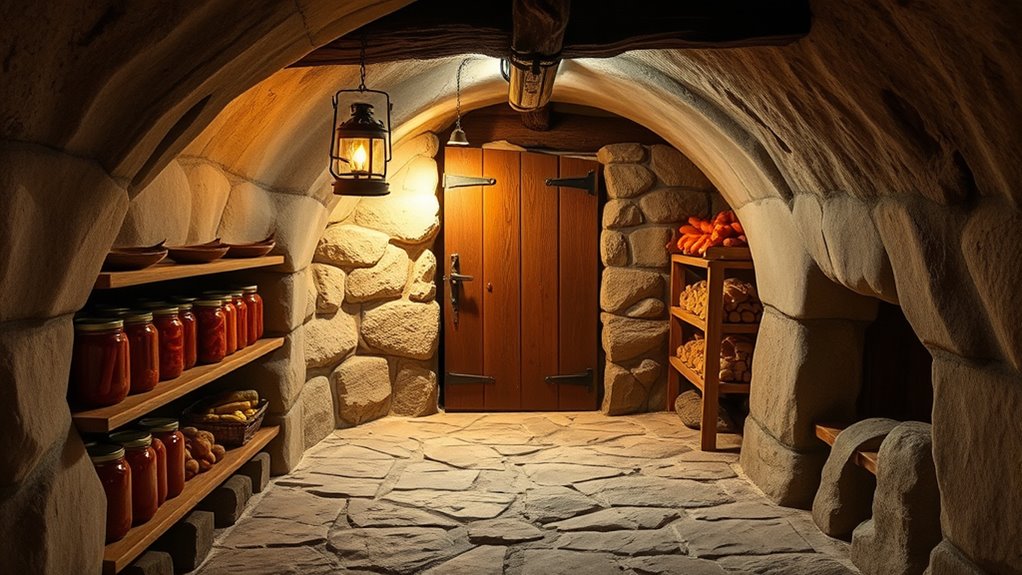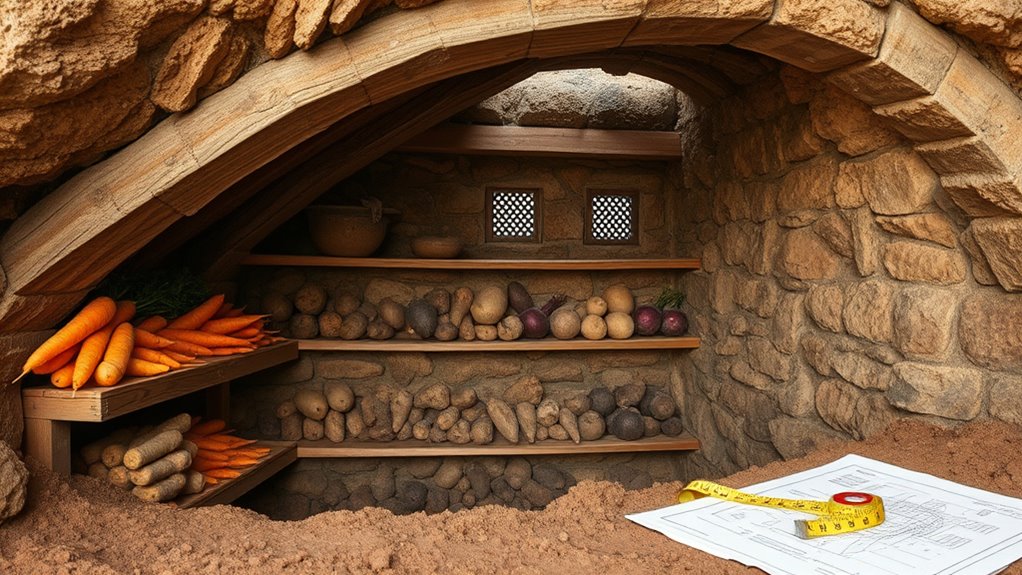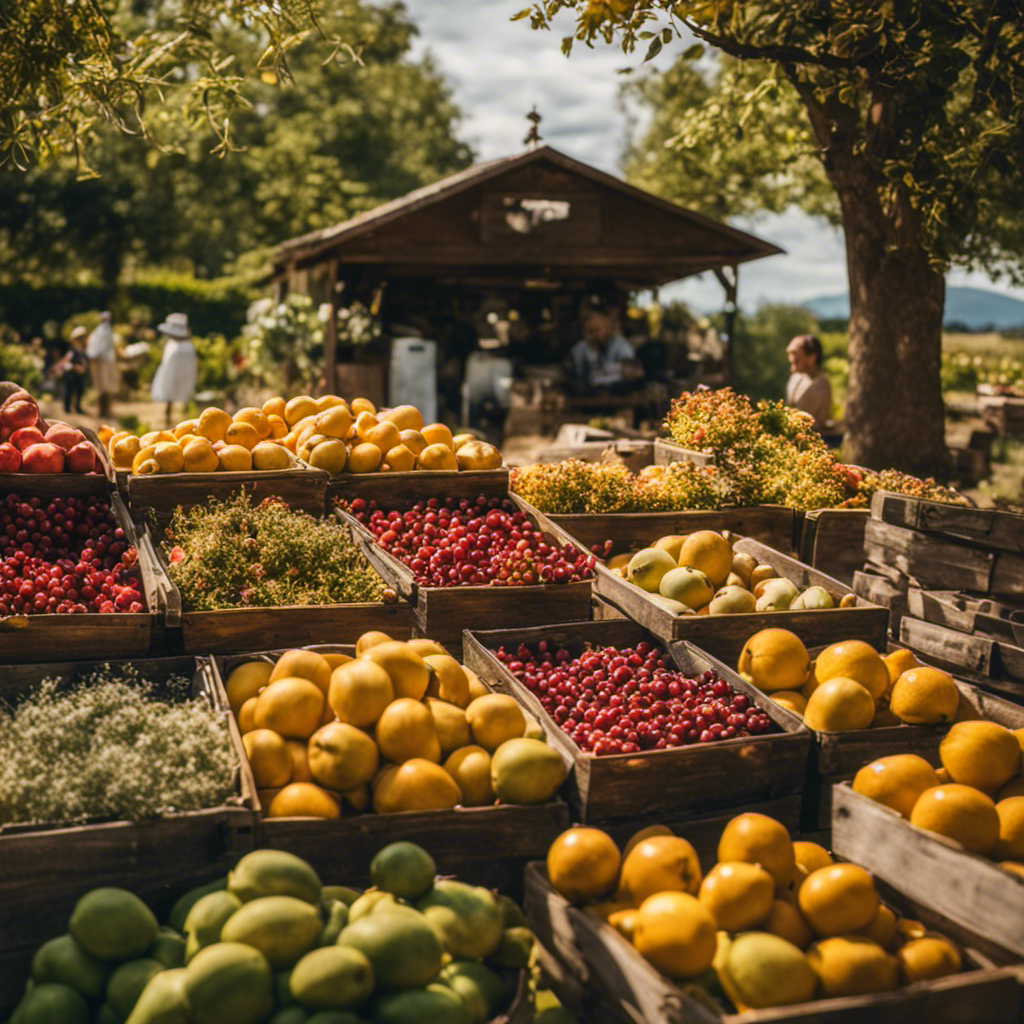Building a root cellar involves creating an underground or partially underground space with proper insulation, ventilation, and moisture control to keep produce cool and humid year-round. Costs depend on the size, materials, and whether you DIY or hire help, but simple approaches like repurposing existing underground spaces are affordable. A well-built root cellar extends produce shelf life and reduces waste. Continue exploring to discover detailed plans, cost tips, and practical uses for your storage needs.
Key Takeaways
- Proper underground construction and insulation maintain a stable, cool environment ideal for root cellar storage.
- Moisture barriers and good airflow prevent mold, rot, and spoilage, ensuring food longevity.
- Costs vary based on size, materials, and DIY vs. professional construction; simple trench methods are cost-effective.
- Incorporate ventilation and moisture control for temperature stability and humidity regulation.
- A well-built root cellar extends produce shelf life, reduces waste, and supports food self-sufficiency.

Have you ever wondered how to keep your vegetables fresh without electricity? Building a root cellar is a smart way to do just that. When designing your cellar, one of the most important aspects is understanding how to maintain proper temperature regulation and moisture control. These factors are essential to prevent spoilage and extend the shelf life of your harvest. The goal is to create an environment that stays cool and humid enough to preserve your produce without the need for refrigeration.
To achieve effective temperature regulation, you need to contemplate the location and construction of your cellar. Ideally, it should be built underground or partially underground to take advantage of the earth’s natural insulation, which keeps the temperature steady year-round. The soil acts as a buffer against external temperature fluctuations, maintaining a consistent cool environment. You can also insulate the walls and ceiling with materials like straw, foam, or mineral wool to further stabilize the internal temperature. Ventilation is equally important; small vents at different heights allow hot air to escape and fresh air to circulate, helping prevent heat buildup and ensuring a steady, cool atmosphere.
Moisture control is equally critical in a root cellar. Too much moisture can cause mold, rot, and spoilage, while too little can lead to produce drying out. To keep humidity levels balanced, you’ll want to incorporate a moisture barrier, such as a layer of plastic or waterproof membrane, on the interior surfaces to prevent dampness from seeping in. Adding a layer of gravel or sand at the bottom can help manage excess moisture, as it allows water to drain away from stored vegetables. It’s also wise to keep the cellar well-ventilated, as good airflow helps regulate humidity levels naturally. Using a hygrometer can assist in monitoring moisture levels, so you can make adjustments as needed. Additionally, understanding the importance of food safety rules for cooking raw chicken can help ensure proper sanitation in food storage and handling areas around your home.
Building your cellar with these principles in mind doesn’t have to be expensive, but it does require careful planning. Costs vary depending on size, materials, and whether you do the work yourself or hire professionals. Simple, DIY approaches—like repurposing an existing underground space or constructing a basic trench with insulation—can be cost-effective. Remember, the key is designing a sealed, insulated, and ventilated environment that minimizes temperature fluctuations and manages moisture effectively. With proper planning, your root cellar will become an invaluable part of your food storage strategy, providing fresh produce long after the harvest season ends—all without relying on electricity.
Frequently Asked Questions
What Permits Are Needed to Build a Root Cellar?
You’ll likely need permits to build a root cellar, depending on your local building codes. Check with your city or county’s permit process to see if you need approval before starting construction. Typically, you’ll submit plans for review, ensuring safety and compliance with regulations. Contact your local building department early to understand requirements and avoid delays, so you can confidently move forward with your project.
How Long Can a Root Cellar Preserve Produce?
Some might think a root cellar can’t preserve produce long, but with proper storage techniques and temperature control, you can keep your vegetables fresh for several months, often up to 6-9 months. Consistently cool temperatures and high humidity slow spoilage, making your root cellar an effective natural fridge. Proper ventilation and regular checks guarantee produce remains in good condition, maximizing your harvest’s longevity without electricity.
What Are Common Mistakes in Building a Root Cellar?
You should avoid common mistakes like poor ventilation and insulation errors when building your root cellar. Ventilation challenges can cause humidity issues and spoil stored produce, so make certain proper airflow. Insulation mistakes might lead to temperature fluctuations, risking spoilage. Carefully plan your ventilation system and insulate correctly to maintain consistent, cool conditions. Taking these precautions helps preserve your harvest longer and keeps your cellar functional and efficient.
Can a Root Cellar Be Built Indoors?
Think of an indoor root cellar as a hidden treasure chest in your home. Yes, you can build one with careful indoor construction, but it’s all about space optimization. You’ll need to carve out a cool, dark corner and make certain of proper insulation and moisture control. Keep in mind, converting a closet or basement nook maximizes storage while keeping your produce fresh and your home organized.
How Do You Maintain Humidity Levels in a Root Cellar?
To maintain proper humidity levels in your root cellar, you should use ventilation techniques that balance airflow while preventing excess moisture loss. Humidity control methods like adding damp sawdust, placing wet sand, or using water trays can help keep the environment moist. Regularly monitor humidity levels with a hygrometer, and adjust ventilation or moisture sources as needed to prevent mold or dryness, ensuring your stored produce stays fresh.
Conclusion
Now that you’ve explored the plans, costs, and versatile uses of a root cellar, one question remains: are you ready to reveal its full potential? As you consider the next steps, remember that this simple addition could transform your food storage forever—if you dare to take the leap. The possibilities are vast, and the true surprises lie just beneath the surface. Will you uncover the secrets that await in your underground sanctuary?










